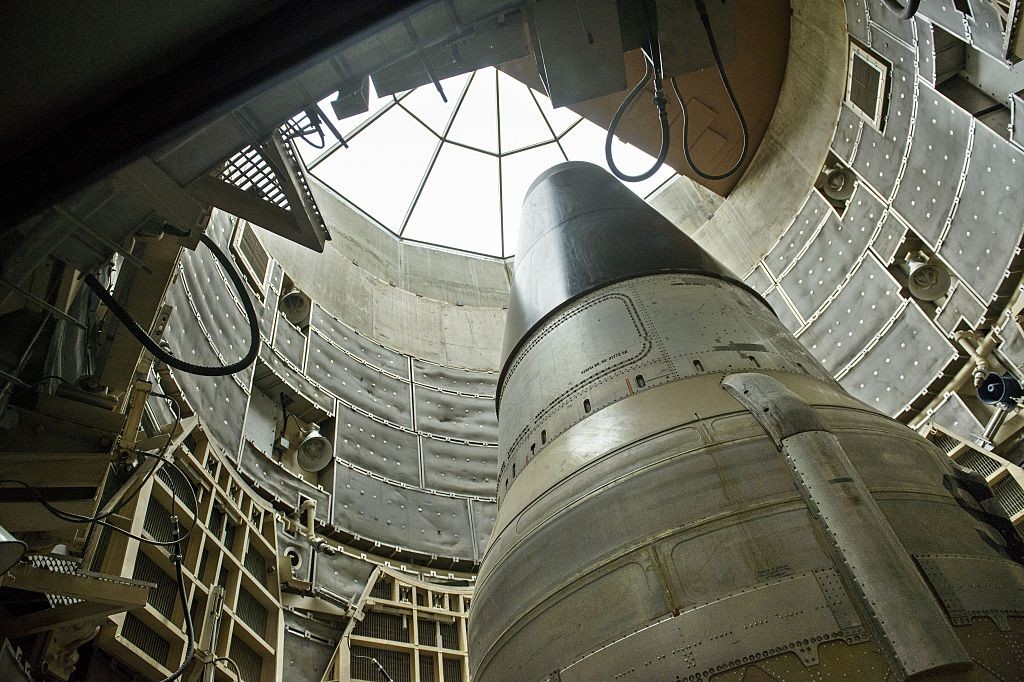Obama’s Nuclear Security Summit Neglects 98 Percent of the World’s Bomb-Ready Uranium
WEAPONS OF MASS DESTRUCTION, 4 Apr 2016
1 Apr 2016 – At president Obama’s fourth and final nuclear security summit taking place this week, world leaders are confronting the danger posed by nuclear terrorism — specifically, by reducing the ways that terrorists could get their hands on the uranium they would need to build a nuclear bomb.
But critics have pointed out that the summits have only focused on highly enriched uranium in civilian possession, which, according to the Department of Energy, only accounts for 2 to 3 percent of the world’s supply. That small percentage is used mostly by academics for research and medical isotope production.
The remaining 97 to 98 percent is held in military stockpiles, which the security summits have largely ignored. Countries keep the safeguards on these stockpiles secret, and military material falls outside the scope of international security agreements.
One fact sheet from the 2014 summit acknowledges that military stockpiles receive far less attention, and explains: “Nuclear materials in weapons are not excluded from the [nuclear security summit] discussions as such, but the emphasis is on nuclear materials in industry. … Military stocks are a sensitive issue, and discussing them could be an obstacle to achieving results in dealing with civil nuclear materials.”
Bruce Blair, co-founder of the Global Zero campaign to eliminate nuclear weapons, complains that “the summit virtually ignores the rest of the materials and the ways they can cause a catastrophe.”
Blair tells The Intercept that “terrorist capture and detonation of nuclear materials under military control” is a real threat.
That’s particularly the case because, ever since the end of the Cold War, countries have increasingly neglected the security of their military stockpiles. For instance, in 1994, German police recovered nearly 400 grams of plutonium-uranium oxide, believed to be of military origin, from smugglers in the Munich Airport. In 2012, three American activists, including an 82-year-old nun, broke into the Y-12 National Security Complex in Oak Ridge, Tennessee, and were not arrested until half an hour later.
An even greater threat comes from military insiders, who can slip material to terrorists. WikiLeaks cables have revealed concerns among top U.S. and U.K. diplomats about jihadi sympathizers in the Pakistani military. One 2010 cable from Anne Patterson, then-U.S. ambassador to Islamabad, said, “Our major concern is not having an Islamic militant steal an entire weapon but rather the chance someone working in government of Pakistan facilities could gradually smuggle enough material out to eventually make a weapon.”
Experts have proposed ways for countries to reduce their military stockpiles. For instance, out of the 600 tons of highly enriched uranium in the U.S. military stockpile, around 150 tons is set aside to fuel the Navy’s nuclear-powered ships. According to a 2016 report by the International Panel on Fissile Materials, the U.S. could power its Navy using lower enriched uranium, prompting other countries dependent on the U.S. for enriched uranium to follow suit.
Kelsey Davenport, director of nonproliferation policy at the Arms Control Association, called the insecure military stockpiles “the elephant in the room.”
Last week’s terror attacks in Brussels have heightened concerns about nuclear terrorism.
Belgian investigators discovered in November that the Paris attackers had spied on a senior Belgian nuclear official, prompting concerns that the attackers were trying to obtain radioactive material.
Some commentators suspected the attackers were attempting to create a “dirty bomb” — a combination of radioactive material and conventional explosives that causes contamination, rather than massive destruction.
But a Harvard study released this month argued that if ISIS could obtain fissile materials, it could construct an improvised nuclear device.
In a 2009 address in Prague, President Obama called the threat of nuclear terrorism “the most immediate and extreme threat to global security.”
Since the first nuclear security summit in 2010, world leaders have made modest advances in nuclear security. Twenty participating countries have committed to increased efforts to combat nuclear smuggling, and at least 14 countries have eliminated their entire stockpiles of highly enriched uranium.
_________________________________
Alex Emmons – ✉alex.emmons@theintercept.com
Go to Original – theintercept.com
DISCLAIMER: The statements, views and opinions expressed in pieces republished here are solely those of the authors and do not necessarily represent those of TMS. In accordance with title 17 U.S.C. section 107, this material is distributed without profit to those who have expressed a prior interest in receiving the included information for research and educational purposes. TMS has no affiliation whatsoever with the originator of this article nor is TMS endorsed or sponsored by the originator. “GO TO ORIGINAL” links are provided as a convenience to our readers and allow for verification of authenticity. However, as originating pages are often updated by their originating host sites, the versions posted may not match the versions our readers view when clicking the “GO TO ORIGINAL” links. This site contains copyrighted material the use of which has not always been specifically authorized by the copyright owner. We are making such material available in our efforts to advance understanding of environmental, political, human rights, economic, democracy, scientific, and social justice issues, etc. We believe this constitutes a ‘fair use’ of any such copyrighted material as provided for in section 107 of the US Copyright Law. In accordance with Title 17 U.S.C. Section 107, the material on this site is distributed without profit to those who have expressed a prior interest in receiving the included information for research and educational purposes. For more information go to: http://www.law.cornell.edu/uscode/17/107.shtml. If you wish to use copyrighted material from this site for purposes of your own that go beyond ‘fair use’, you must obtain permission from the copyright owner.
Read more
Click here to go to the current weekly digest or pick another article:
WEAPONS OF MASS DESTRUCTION:
